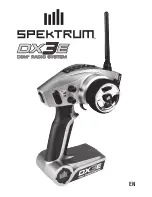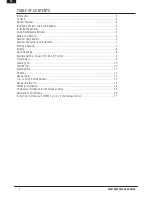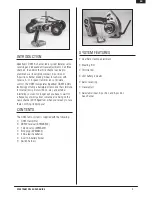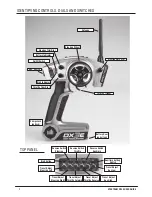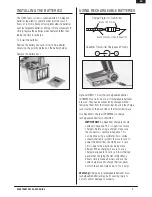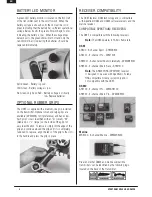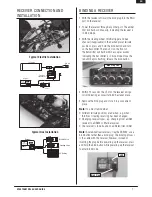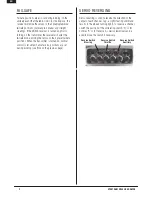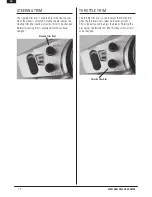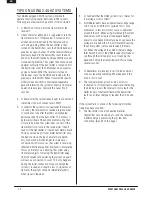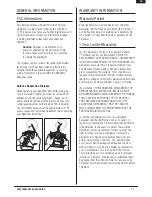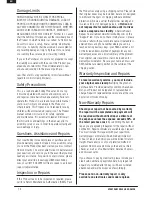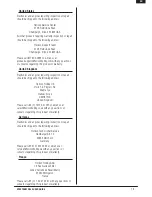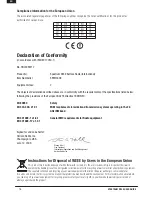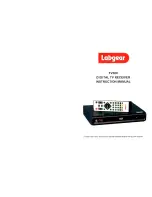
12
SPEKTRUM DX3E USER GUIDE
3. Q: I’ve heard that the DSM system is less tolerant of
low voltage. Is this correct?
A: All DSM receivers have an operational voltage range
of 3.5 to 9 volts. With most systems this is not a
problem as in fact most servos cease to operate at
around 3.8 volts. When using multiple high-current
draw servos with a single or inadequate battery/
power source, heavy momentary loads can cause the
voltage to dip below this 3.5-volt threshold causing
the entire system (servos and receiver) to brown
out. When the voltage drops below the low voltage
threshold (3.5 volts), the DSM receiver must reboot
(go through the start up process of scanning the
band and finding the transmitter) and this can take
several seconds.
4. Q: Sometimes my receiver loses its bind and won’t
connect, requiring rebinding. What happens if the
bind is lost in use?
A: The receiver will never lose its bind unless it’s
instructed to. It’s important to understand that during
the binding process the receiver not only learns the
GUID (code) of the transmitter but the transmitter
learns and stores the type of receiver that it’s bound
to.
If the system fails to connect, the following more than
likely may have occurred:
• The transmitter is near conductive material
(transmitter case, truck bed, etc.) and the reflected
2.4GHz energy is preventing the system from
connecting. (See #2 on this page)
TIPs on usIng 2.4ghz sysTems
Your DSM equipped 2.4GHz system is intuitive to
operate, functioning nearly identically to FM systems.
Following are a few common questions from customers.
1. Q: Which do I turn on first, the transmitter or the
receiver?
A: It doesn’t matter, although it is suggested to turn the
transmitter on first. If the receiver is turned on first,
all channels will be driven to the failsafe position
set during binding. When the transmitter is then
turned on the transmitter scans the 2.4GHz band and
acquires an open channel. Then the receiver that was
previously bound to the transmitter scans the band
and finds the GUID (Globally Unique Identifier code)
stored during binding. The system then connects and
operates normally. If the transmitter is turned on first,
the transmitter scans the 2.4GHz band and acquires
an open channel. When the receiver is turned on,
the receiver scans the 2.4GHz band looking for the
previously stored GUID. When it locates the specific
GUID code and confirms uncorrupted repeatable
packet information, the system connects and normal
operation takes place. Typically this takes 2 to 6
seconds.
2. Q: Sometimes the system takes longer to connect and
sometimes it doesn’t connect at all. Why?
A In order for the system to connect (after the receiver
is bound), the receiver must receive a large number
of continuous (one after the other) uninterrupted
perfect packets from the transmitter. This process is
purposely critical of the environment ensuring that
it’s safe to fly when the system does connect. If the
transmitter is too close to the receiver (less than 4
feet) or if the transmitter is located near metal objects
(inside or around a pit trailer, metal transmitter case,
the bed of a truck, the top of a metal work bench,
etc.) connection will take longer. In some cases
connection will not occur as the system is receiving
reflected 2.4GHz energy from itself and is interpreting
this as unfriendly noise. Moving the system away
from metal objects or moving the transmitter away
from the receiver and powering the system up again
will cause a connection to occur. This only happens
during the initial connection. Once connected the
system is locked, and should a loss of signal occur
(failsafe), the system connects immediately (4ms)
when signal is regained.
EN
Summary of Contents for DX3E
Page 1: ... EN ...

